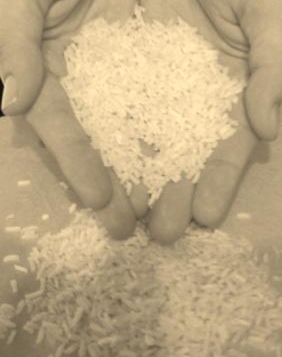
The United States secretary of agriculture is the head of the United States Department of Agriculture. The position carries similar responsibilities to those of agriculture ministers in other governments.

The United States Department of Agriculture (USDA) is an executive department of the United States federal government that aims to meet the needs of commercial farming and livestock food production, promotes agricultural trade and production, works to assure food safety, protects natural resources, fosters rural communities and works to end hunger in the United States and internationally. It is headed by the secretary of agriculture, who reports directly to the president of the United States and is a member of the president's Cabinet. The current secretary is Tom Vilsack, who has served since February 24, 2021.

In the United States, the Supplemental Nutrition Assistance Program (SNAP), formerly known as the Food Stamp Program, is a federal government program that provides food-purchasing assistance for low- and no-income people to help them maintain adequate nutrition and health. It is a federal aid program administered by the U.S. Department of Agriculture (USDA) under the Food and Nutrition Service (FNS), though benefits are distributed by specific departments of U.S. states.

Electronic benefit transfer (EBT) is an electronic system that allows state welfare departments to issue benefits via a magnetically encoded payment card used in the United States. It reached nationwide operations in 2004. The average monthly EBT payout is $230 per participant as of 2022.

The Food and Nutrition Service (FNS) is an agency of the United States Department of Agriculture (USDA). The FNS is the federal agency responsible for administering the nation’s domestic nutrition assistance programs. The service helps to address the issue of hunger in the United States.
The basic needs approach is one of the major approaches to the measurement of absolute poverty in developing countries globally. It works to define the absolute minimum resources necessary for long-term physical well-being, usually in terms of consumption goods. The poverty line is then defined as the amount of income required to satisfy the needs of the people. The "basic needs" approach was introduced by the International Labour Organization's World Employment Conference in 1976. "Perhaps the high point of the WEP was the World Employment Conference of 1976, which proposed the satisfaction of basic human needs as the overriding objective of national and international development policy. The basic needs approach to development was endorsed by governments and workers' and employers' organizations from all over the world. It influenced the programmes and policies of major multilateral and bilateral development agencies, and was the precursor to the human development approach."

Government cheese is processed cheese provided to welfare beneficiaries, Food Stamp recipients, and the elderly receiving Social Security in the United States, as well as to food banks and churches. This processed cheese was used in military kitchens during World War II and has been used in schools since the 1950s.

The Special Supplemental Nutrition Program for Women, Infants, and Children (WIC) is an American federal assistance program of the Food and Nutrition Service (FNS) of the United States Department of Agriculture (USDA) for healthcare and nutrition of low-income pregnant women, breastfeeding women, and children under the age of five as part of child nutrition programs. Their mission is to be a partner with other services that are key to childhood and family well-being. WIC serves 53 percent of all infants born in the United States.

Food policy is the area of public policy concerning how food is produced, processed, distributed, purchased, or provided. Food policies are designed to influence the operation of the food and agriculture system balanced with ensuring human health needs. This often includes decision-making around production and processing techniques, marketing, availability, utilization, and consumption of food, in the interest of meeting or furthering social objectives. Food policy can be promulgated on any level, from local to global, and by a government agency, business, or organization. Food policymakers engage in activities such as regulation of food-related industries, establishing eligibility standards for food assistance programs for the poor, ensuring safety of the food supply, food labeling, and even the qualifications of a product to be considered organic.
The Under Secretary for Food, Nutrition, and Consumer Services is a position created within the United States Department of Agriculture in 1993, and is responsible for administrating the department's fifteen nutrition and food security programs and for promoting the dietary guidelines. <7 CFR § 2.19> The food assistance programs have a combined budget of $170.5 billion and include the Food Stamp Program, the Special Supplemental Nutrition Program for Women, Infants and Children, the National School Lunch and School Breakfast Programs, and the Commodity Distribution Programs. In addition, the Undersecretary oversees the Center for Nutrition Policy and Promotion, which leads the development of dietary guidelines and which promotes the guidelines through the Food Guide Pyramid (MyPyramid.gov).
Nutrition Assistance for Puerto Rico (NAP) —Spanish: Programa de Asistencia Nutricional (PAN) popularly known in Puerto Rico as Cupones — is a federal assistance nutritional program provided by the United States Department of Agriculture (USDA) solely to Puerto Rico. In 2021, over $2 billion USD was appropriated as a block grant for NAP to assist over 1 million impoverished residents of Puerto Rico. It is based on, though not part of, the USDA's national Supplemental Nutrition Assistance Program (SNAP) which in 2018 provided $64 billion in nutritional assistance to 42 million people in the 50 U.S. states, D.C., Guam and the US Virgin Islands.

The ketchup as a vegetable controversy stemmed from proposed regulations of school lunches by the USDA's Food and Nutrition Service (FNS) in 1981, early in the presidency of Ronald Reagan. The regulations were intended to provide meal planning flexibility to local school lunch administrators coping with cuts to the National School Lunch Program enacted by the Omnibus Reconciliation Acts of 1980 and 1981. The proposed changes allowed administrators to meet nutritional requirements by crediting food items not explicitly listed. While ketchup was not mentioned in the original regulations, pickle relish was used as an example of an item that could count as a vegetable.
The Food Distribution Program on Indian Reservations (FDPIR) allows Indian Tribal Organizations (ITOs) to operate a food distribution program as an alternative to the Food Stamp Program for those living on or near an Indian reservation. The Food and Nutrition Service (FNS), an agency of the U.S. Department of Agriculture, administers FDPIR at the Federal level, and is locally operated through ITOs or State agencies(SAs). Eligibility for benefits is similar to the food stamp (SNAP) program, and funds are drawn from food stamp appropriations. Food Distribution Program Nutrition Education (FDPIR) grants are also awarded to participating FDPIR ITOs. These grants are awarded to support nutrition education activities that are culturally relevant, promoting healthy food choices, and promoting physical activity among participants.
Harvard Law defines poverty law as, "the legal statutes, regulations and cases that apply particularly to the financially poor in his or her day to day life". In a commonsense understanding and in practice, the goal of poverty law is to protect the disadvantaged poor from unfair treatment by the law. Poverty law often overlaps with federal benefits and welfare policies. Pertinent federal government benefits include Medicaid; cash public assistance ; and the Supplemental Nutrition Assistance Program (SNAP) program, previously known as the food stamps program. Poverty law frequently involves questions of administrative law, civil rights law, constitutional law, employment law, and health law.
Nutrition education is a combination of learning experiences designed to teach individuals or groups about the principles of a balanced diet, the importance of various nutrients, how to make healthy food choices, and how both dietary and exercise habits can affect overall well-being. It includes a combination of educational strategies, accompanied by environmental supports, designed to facilitate voluntary adoption of food choices and other nutrition-related behaviors conducive to well-being. Nutrition education is delivered through multiple venues and involves activities at the individual, community, and policy levels. Nutrition Education also critically looks at issues such as food security, food literacy, and food sustainability.

MyPlate is the current nutrition guide published by the United States Department of Agriculture's Center for Nutrition Policy and Promotion, and serves as a recommendation based on the Dietary Guidelines for Americans. It replaced the USDA's MyPyramid guide on June 2, 2011, ending 19 years of USDA food pyramid diagrams. MyPlate is displayed on food packaging and used in nutrition education in the United States. The graphic depicts a place setting with a plate and glass divided into five food groups that are recommended parts of a healthy diet. This dietary recommendation combines an organized amount of fruits, vegetables, grains, protein, and dairy. It is designed as a guideline for Americans to base their plate around in order to make educated food choices. ChooseMyPlate.gov shows individuals the variety of these 5 subgroups based on their activity levels and personal characteristics.
The New York City Coalition Against Hunger (NYCCAH) is a nonprofit organization, which aims to “enact innovative solutions to help society move ‘beyond the soup kitchen’ to ensure economic and food self-sufficiency for all Americans”. NYCCAH works collaboratively with local, state, and national legislatures as well as New York residents and community associations. In contrast to other organizations, NYCCAH generally does not distribute food but rather concerns itself with providing technical assistance to groups which do while simultaneously affecting hunger policy at a more macro-urban scale.
School meals are provided free of charge, or at a government-subsidized price, to United States students from low-income families. These free or subsidized meals have the potential to increase household food security, which can improve children's health and expand their educational opportunities. A study of a free school meal program in the United States found that providing free meals to elementary and middle school children in areas characterized by high food insecurity led to increased school discipline among the students.

CalFresh is the California implementation of the federal Supplemental Nutrition Assistance Program (SNAP), formerly known as the Food Stamp program, which provides financial assistance for purchasing food to low-income California residents.

Goop is a wellness and lifestyle brand and company founded by the American actress Gwyneth Paltrow. It was launched in September 2008 as a weekly e-mail newsletter providing new age advice, such as "police your thoughts" and "eliminate white foods", and the slogan "Nourish the Inner Aspect". Goop expanded into e-commerce, collaborating with fashion brands, launching pop-up shops, holding a "wellness summit", launching a print magazine, a podcast, and a docuseries for Netflix.











